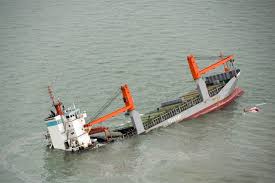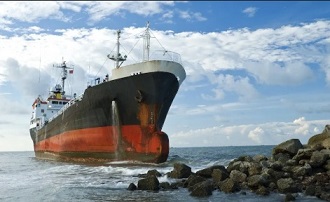 Home ||
Tanker Safety ||
Container Ship Handling ||
Commercial Management ||
EMS ||
Home ||
Tanker Safety ||
Container Ship Handling ||
Commercial Management ||
EMS ||
What is Stranding ? How It Differs From Beaching a Ship?
Stranding means when a vessel has run aground, it is accidental. In consequence, the double bottom area of the vessel will probably suffer considerable damage, especially if the ground is rocky. This is physically the same action as beaching, but with the significant
difference that beaching the vessel is an intentional action and under
comparatively controlled conditions, whereas stranding is accidental.
Circumstances will vary with different ships,but selecting a convenient position
to ‘set down’ will in all probability never arise. In consequence, the double
bottom area of the vessel will probably suffer considerable damage,
especially if the ground is rocky.




